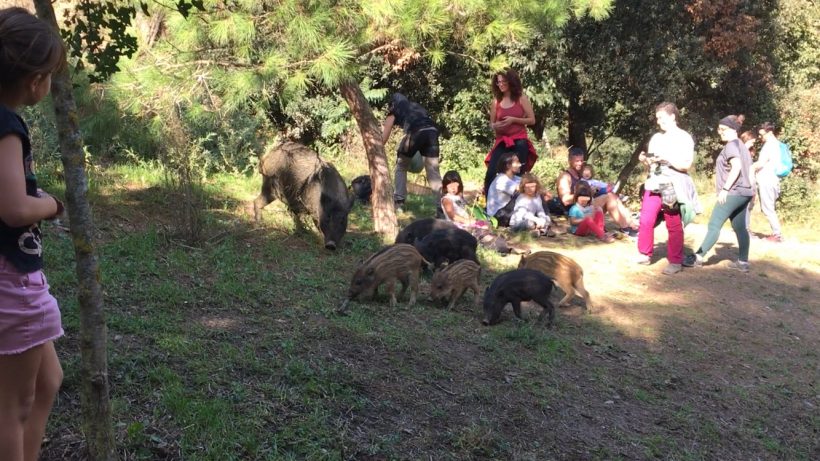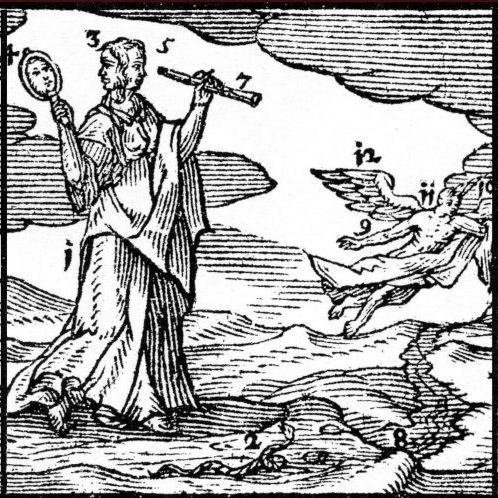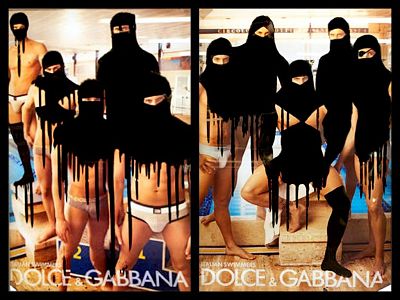The COVID-19 pandemic reveals a vital-lethal entanglement of human and nonhuman bodies at a global scale. This post first draws attention on how different viral strains may interplay within and across species, both biologically and socially. The essay then considers the emerging multispecies viralscapes as a ‘wild’ planetary niche that binds bodies in ways for which technoscientific projects of domestication are obsolete.
‘Wild boars do not comply with confinement’, says a twitter commentator on March 20th. In effect, wild boars roam freely along the empty streets of Barcelona while people follow the quarantine lock down of the COVID-19. I am part of a collaborative project revolving around the anthropology of hunting, veterinary medicine, and wild boars. Personally, I follow the particular case of some surprising porcine neighbours of Barcelona. Today my ethnographic ‘subjects’ are outside and I am writing from home confinement, trying to track the unruly pigs through the internet.
The presence of wild boars is not new to Barcelona. However, the mobility of these swine guests is now less hindered than ever as they move into the urban hub. Italian wild boars had the same idea in Genoa. In fact, it is a pioneering momentum for many other species as well: wild turkeys and deer have been seen in different urban contexts, wild ducks swim in the Fontana di Trevi, hungry monkeys fight over food after tourist-feeders disappeared from the streets of Lopburi (Thailand).
COVID-19 is bringing a wide range of animals into the new textures of viral cities.
But even though one might think so, COVID-19 is not the only virus playing its deadly cards today. Precisely the Chinese province of Hubei is now preoccupied with yet another outbreak, now of what is called African Swine Fever Virus (ASFV). This is a viral strain that very quickly kills pigs, wild and domestic, with catastrophic consequences for pig farming economies and ecologies in Asia, and potentially in Europe as well. ASFV does not kill humans, but it gets out of control very easily when humans are in trouble. In Hubei, the COVID-19 quarantine has been limiting the mobility of the veterinary staff that controls the ASFV, of which wild boars are an important vector of transmission. There is an interplay between ASFV and COVID 19, as there are crucial interplays between humans, wild boars and domestic pigs.
I argue that the viral multispecies intertwinements of the current pandemic will lead us to rethink the ways we want to ‘attune’ our human bodies to the bodies of others-animals in the future (Despret 2004). For instance, it is said that COVID-19, as Ebola and HIV/AIDS, came into human bodies through zoonotic transmission. Zoonosis is the process by which a disease is passed form the body of an animal to the body of a human, yet it has also the reverse dynamics of transmission (Lainé 2018).
We are all now aware of and concerned with zoonosis.
Edward Holmes, a virologist who is tracing the human-pangolin zoonoses of COVID-19 has already noted that one lesson of this pandemic should be the need to reduce human’s self-exposure to wildlife. Indeed, after COVID-19, many will fear that ‘with all human-animal coexistence being subsumed under the sign of the “coming plague”, every human-animal interaction becomes a potential pandemic ground zero’ (Keck and Lynteris 2018: n.p.).
Today I wonder: how will the aftermath of COVID-19 transform my field-site, where humans and wild boars engage in quite intimate ways? I had recently a conversation with Gregorio Mentaberre, a veterinary scientist from the Wildlife Ecology and Health Group (Autonomous University of Barcelona). He speculates that the movement of wild boars into the city—now enhanced by the current human quarantine— could increase the presence of tics and pathogens such as enterobacteriaceae in urban parks and green areas. Will this lead to human-wild boar ‘social distancing’ in the future? Will humans become more cautious about zoonotic transmission of coronaviruses, ASFV and other pathogens? What I tentatively call the emergence of ‘viralscapes’ denotes the rendering visible—or imaginable— the corporeal multispecies sceneries in which viruses circulate. These inter-corporeal sceneries or ‘scapes’ are now becoming widely ‘represented’ in the media, turning the microbial live of human and nonhuman others into a social concern. COVID-19 is certainly bringing some inter-corporeal microbial relations to the fore, but how will the viralscapes that we all now start to see and feel impact on particular interspecies relational habits is yet to be seen.

Wild boars and people close distances in Barcelona. Foto: Aníbal Arregui
I write this commentary from a concerned home confinement, yet with the hopeful sight towards new forms human life and multispecies coexistence ‘after’ COVID-19. I also see that the work of anthropology, history and other social sciences and humanities is in times of crises more important than ever. Some insights coming from that angle of sciences will be crucial in repositioning humans within the rapidly emerging multi-specific viralscapes of our times. We can for example observe how previous plagues have been imagined, rendered visible and socially addressed (Lynteris 2019). Or we may take inspiration from the reversible violence between species in the context of hunting, and thus understand the task of virology as that of ‘chasing’ beings that can at any moment strike back and kill us as well (Keck 2018).
Since viruses are wild beings and their wild niche is our bodies, we will need to hunt inside us. And we will need to respect the viruses just as hunters respect the potentially reversible, deadly agency of their prey.
Hunters are not lonely predators. They act in coordination with a collective of other-than-humans whose interplays in a given environment need to be well known. The first thing hunters recognise is that most of their other-than-human allies and enemies are ‘wild’, i.e. autonomous and non-domesticable as species. This fosters a bodily attentiveness and affection towards others that front-stages respect, something quite different from relying on the submission and obedience of those whose autonomy has been co-opted by technoscience.
Likewise, I would argue that it is not possible to position ourselves safely within the viralscapes we share with others without knowing and respecting their open-ended, autonomous, microbiome-level interactions. There is an emerging branch of virology that studies what they call the ‘social live of viruses’ (Dolgin 2019). These specialists study the communication and coordination between different strains of viruses which ally to jointly conquer an organism. From a social science multispecies perspective, I suggest that in order to map these microbial ‘social’ dynamics, we need to not only know how viruses interact biologically, but also how human-human and human-nonhuman bodily engagements reshuffle viral relations themselves in unpredictable ways.
The balance that allows for human life within the emerging viralscapes is a project that necessarily involves to rethink collectively our relation to other-than-humans. Of course we as individuals need to know the bodies and affects of others to prevent situations of pathogenic zoonosis, and the later contagion and propagation between humans. But this does not necessarily enshrine the celebrated ‘distancing’ once and for all. It also involves care, respect, and humility towards others. The individual modelling of ‘distancing’ is being rapidly put into practice to prevent transmission between humans, and some are claiming or applying this distance to animals as well.
A cautious, temporary distancing might be now vitally necessary. But it cannot settle as a relational or cultural status quo. We have seen in the last weeks the emergence of disgusting, virally driven forms of racism and ‘othering’. First, ‘unhygienic’ Chinese individuals were blamed for COVID-19 spread. Then the ‘grabby’ Italians. Soon after, stereotyped Spanish practices of indiscriminate kissing in greeting could well be indicted next. To combat this, a full set of body techniques (Mauss 1968) of hygiene and ‘social distancing’ has been imposed at an unprecedented scale: a planetary anatomo-political discipline. Just imagine Michael Foucault waking up right now and seeing this mess. And now imagine how he would imagine the complex interplay of COVID-19 and that other virus that took him away: HIV/AIDS.
The point I wish to make is that it does not matter whether you are a Chinese or an American person, a pangolin or a wild boar.
Amid today’s rapidly evolving viralscapes, our bodies are, inevitably, the bodies of others. Never has the permeability of individuals’ bodies been as dramatically evident as it is in the current pandemic. And yet, the irruption of COVID-19 does not reveal that we were too close to each other. It shows we didn’t foresee the danger of the radical porosity of our shared bodies. We didn’t predict how wildness could play outside, inside, and between us. Even if ‘distance’ can become a conduit for ignorance, carelessness or racism, for many this pandemic will be the revelation that we are vitally enmeshed.
This is why self-discipline, body techniques of hygiene and social distancing cannot be the telos of this moment for humanity. We all know—or hope—this is only a temporary, short-term solution. Humans and other-than-humans will soon restart to navigate the interrupted individual distances. Therefore, the emergence COVID-19 may be an opportunity to rethink the system that inevitably binds us as a multi-species collective, not as human individuals. Several voices are already pointing in that direction, for instance recalling the economic destructive logics that prevented us from stopping the propagation of COVID-19 timely (e.g. Staal 2020).
In any case, we have now a total system failure that has become a somatic issue for almost all humans in the world. But this is not a human quarrel against COVID-19 as a species, or a strain of virus. This is a moment to rethink our position in the viralscapes in which COVID-19 is chasing us back, while at the same time it weaves silent connections with ASFV, HIV/AIDS, and who knows what other invisible monsters. So far, COVID-19 and its peers are telling us they will remain wild, and even if we tame some of them with an eventual vaccine, they will keep mutating, allying, and coming back through our ubiquitous human and other-than-human bodies.
We see now the somatic multispecies forest we live in, and we cannot domesticate it.
We can only show respect for the wild bodies that circulate among and within us, and accept uncertainty. This is something at which hunters are much better than scientists.
This thread is part of the ongoing Corona thread on Allegra.
Acknowledgments
I want to thank Ludek Broz, Gregorio Mentaberre and Allegralaboratory editors for the conversations that have crucially oriented this essay. Also thanks to my family, for respecting the temporary confinement within the confinement and giving me spaces for writing in these strange days.
References
Despret, Vinciane (2004) The Body We Care For: Figures of Anthropo-zoo-genesis Body & Society 10 (2–3): 111–134 DOI: 10.1177/1357034X04042938
Dolgin, Elie (2019) The Secret Social Lives of Viruses. Nature 570, 290-292 doi: 10.1038/d41586-019-01880-6
Keck, F. (2018), Avian preparedness: simulations of bird diseases and reverse scenarios of extinction in Hong Kong, Taiwan, and Singapore. Journal of the Royal Anthropological Institute, 24: 330-347. doi:10.1111/1467-9655.12813
Keck, Frederic and Lynteris, Christos (2018) Zoonosis. Prospects and challenges for medical anthropology. Medicine Anthropology Theory 5 (3): 1–14; https://doi.org/ 10.17157/mat.5.3.372.
Lainé, Nicolas (2018). Elephant tuberculosis as a reverse zoonosis. Postcolonial scenes of compassion, conservation, and public health in Laos and France. Medicine Anthropology Theory 5 (3): 157–176; http://doi.org/10.17157/mat.5.3.379
Lynteris, Christos (2019) Human Extinction and the Pandemic Imaginary. London: Routledge.
Mauss, Marcel (1968) Les techniques du corps. Sociologie et Antropologie. Paris: Presses Universitaires de France.
Staal, Jonas (2020) “Coronavirus Propagations”. e_flux. https://conversations.e-flux.com/t/coronavirus-propagations-by-jonas-staal/9671




